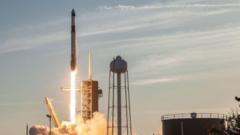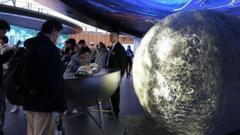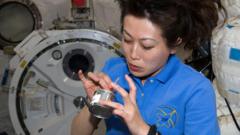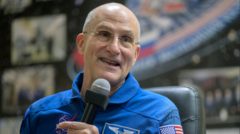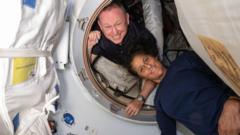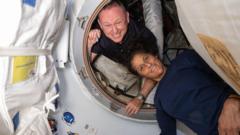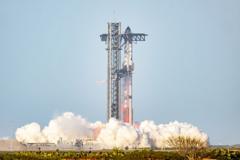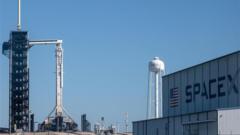NASA's Parker Solar Probe has made history by completing the closest-ever fly-by of the Sun, returning data and signals that offer unprecedented insights into solar phenomena.
NASA's Parker Solar Probe Sets Record with Historic Sun Fly-By
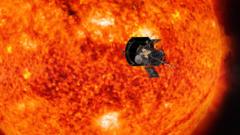
NASA's Parker Solar Probe Sets Record with Historic Sun Fly-By
NASA's unmanned spacecraft reaches new heights in solar exploration as it survives a record-breaking close encounter with the Sun.
A NASA spacecraft has rewritten the record books, successfully enduring the closest fly-by of the Sun to date. The Parker Solar Probe made its daring approach and established communication with scientists just before midnight Thursday after an intense period of silence during its fiery passage.
At a jaw-dropping proximity of just 3.8 million miles (6.1 million kilometers) from the Sun's surface, the probe plunged into the sun's outer atmosphere, known as the corona, on Christmas Eve. The Parker Solar Probe has embarked on a mission to unravel significant mysteries about the Sun’s behavior, subjects that have puzzled scientists for centuries.
The probe, which travels at speeds up to 430,000 mph (692,000 kph), faced extreme conditions, including temperatures soaring to 1,800 degrees Fahrenheit (980 degrees Celsius). Fortunately, the spacecraft is equipped with an advanced 11.5 cm (4.5 in) carbon-composite shield to withstand the intense radiation and heat. With the ability to travel faster than any human-made object, Parker’s proximity to the Sun during its high-speed maneuver is akin to shrinking the distance between the Earth and Sun—placing the probe only 4 cm from the star if the two were scaled to a meter apart.
Scientists emphasize the importance of this mission, which aims to shed light on how the corona, the Sun's outer layer, can reach millions of degrees, despite the surface temperature resting around 6,000 degrees Celsius. Dr. Jenifer Millard, an astronomer at Fifth Star Labs, noted the mystery of this temperature discrepancy, stating, "How is that atmosphere getting hotter?"
Additionally, the Parker Solar Probe seeks to enhance our understanding of solar wind, the continuous stream of charged particles that erupts from the Sun's corona. These particles can create breathtaking auroras but can also disrupt power grids and communication systems on Earth, making the study of solar phenomena critical for protecting our technology.
Following a tense wait over the holidays, NASA scientists received confirmation that the Parker Solar Probe was safe and operating normally. Dr. Nicola Fox, head of NASA science, shared her anxiety leading up to the communication, but praised the probe’s engineering designed to withstand extreme conditions while asserting, "[it’s] a tough, tough little spacecraft."
As scientists await further data from this groundbreaking mission, the Parker Solar Probe stands at the forefront of solar explorations, promising to contribute significant knowledge that enhances our grasp of solar dynamics and their implications for Earth.

